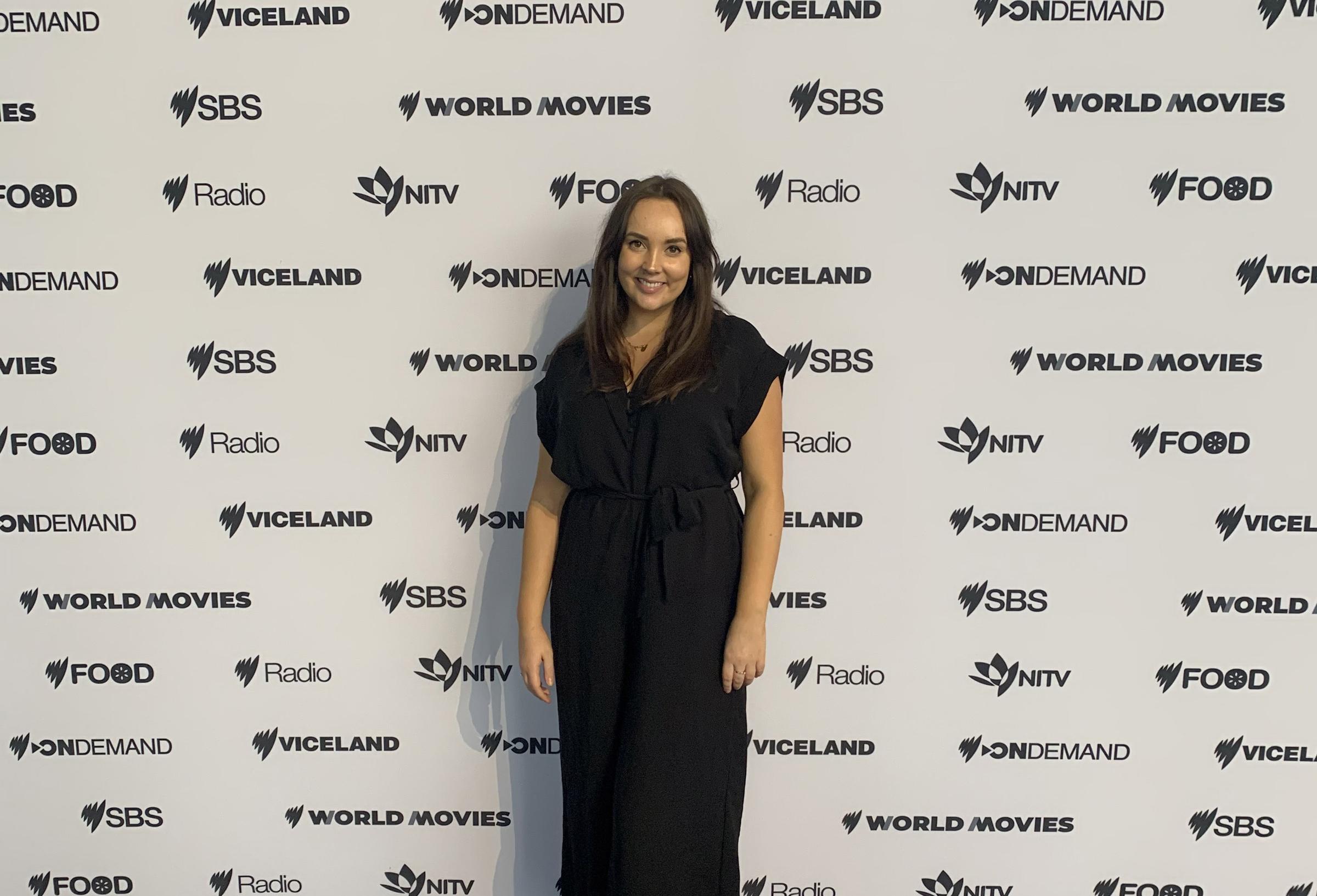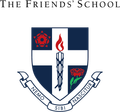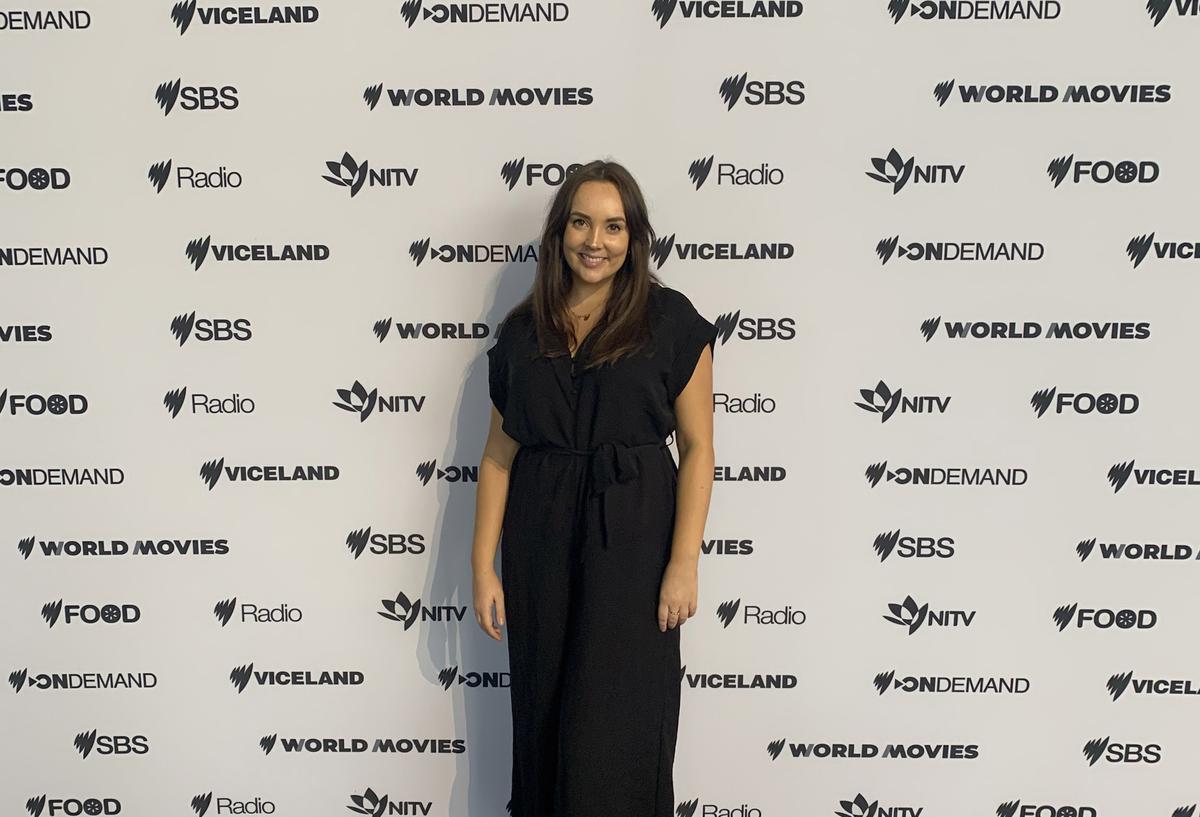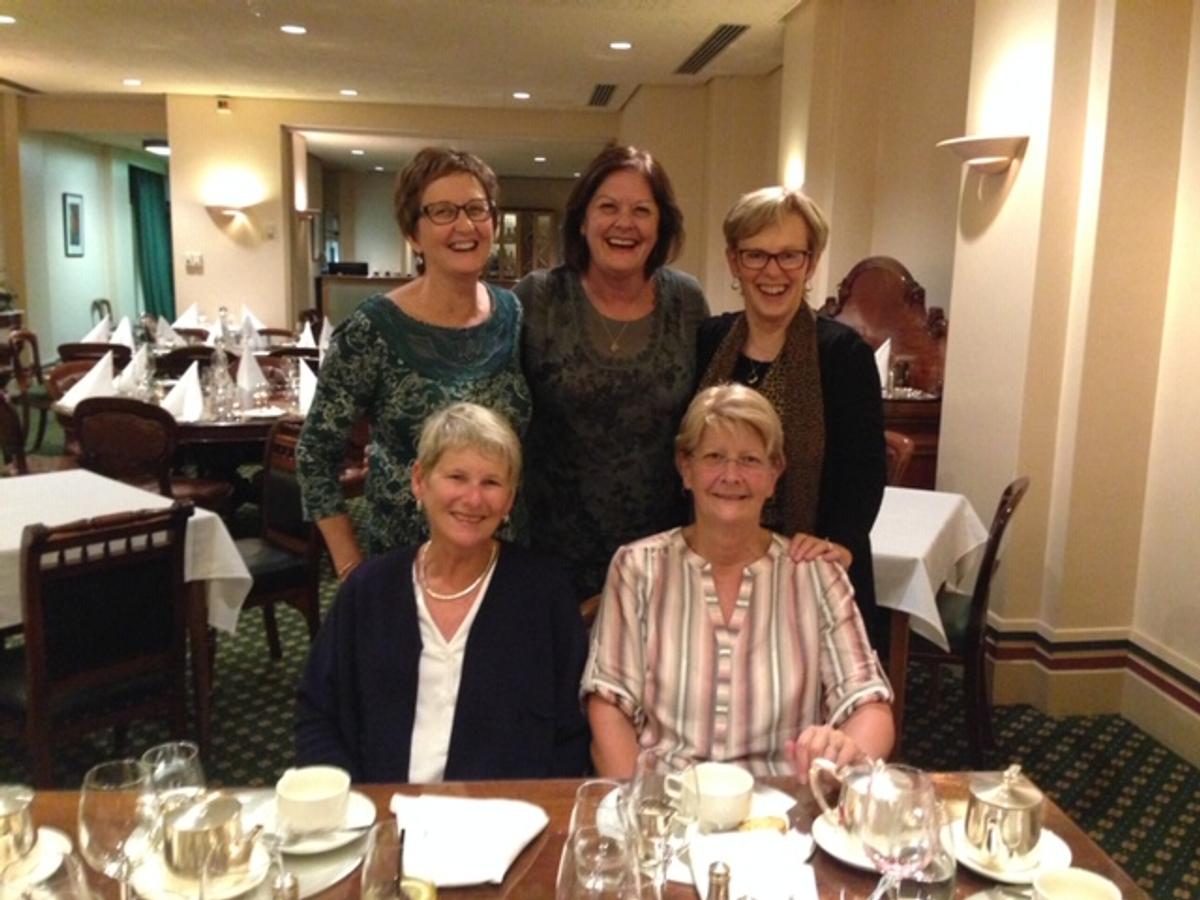Alumni

Where are they now? Hannah Pemberton (2009)
Thank you to 2009 Alumnus, Hannah Pemberton, recently shared her story with us.
After I graduated from Friends’ in 2009, I headed off to Winnipeg in Canada for a GAP year – working in a boarding school and travelling through North America at every given chance.
I then returned to Australia, where I began my BA in Media Communications and Sociology at the University of Melbourne. After a year and a half, I headed to the University of Manchester in the UK for a year on exchange, before returning to Australia for six months to finish my degree.
My teachers at Friends’ may remember that upon graduating from school, I had considered a career in law or journalism. After just a few months at University, I had a lecturer ask me what I wanted to be, and before I could clarify my answer, he said: “No, you’re a publicist.” I then endeavoured to grab every opportunity, through internships and volunteering, in an effort to get some experience before heading out into the big wide world. I was lucky enough to secure an internship at Havas Media, which fuelled my passion for the industry.
You can read Hannah's full story HERE.
Alan Anthony Cane 1935 – 2020
Cricket tragic, fervent Collingwood supporter, crack foreign correspondent, acknowledged Haydn specialist, music journalist par excellence. These were just some of the many interests, abilities and achievements that marked the long, rich, full and creative life of Tony Cane spanning 84 years and devotion to communication in all its diversity.
Alan Anthony Cane, ‘Tony’ to all for most of his life, hailed from New Town in Tasmania, the son of Alan, a print journalist with the Hobart Mercury. His idyllic childhood during WW II was spent daily with his younger sister and neighbourhood children, the only parental stipulation being that they be home ‘before the streetlights came on’. His sister, Lindsay, remembers Tony as being a bit bossy and she would have to bowl five overs to him (note it was eight balls back then) before she would get a turn at the wicket.
Founded by Quakers in 1887, The Friends’ School in Hobart was the siblings’ Alma Mater from age five and the school motto Nemo Sibi Nascitur (No one is born for self alone) possibly proved of some personal resonance in Tony’s life. He shone academically gaining high passes for English and German and credits for History and French and in his matriculation year was involved in starting ‘Focus’ the school newspaper (which still runs to this day) and became its first editor. He engaged in debating in his senior years and (though not quite a Quaker term) was ‘head prefect’ in 1952. He also played AFL.
That education also imbued him with a love of Classical music; the school having a huge collection of 78 r.p.m. records and one would be played at Assembly each morning along with some information about it. Tony exhibited instant rapport with a piece such as Smetana’s Vltava (The Moldau), Lindsay recalls, though owing to the medium of 78s, it had to be heard in daily instalments which, as she says (without pun), did rather ruin the flow. She also talks of her brother’s record collecting, beginning in senior school with purchases financed by holiday work, and how he came to ‘requisition’ the dining room for auditioning them at near sonic boom levels (much to the chagrin of his mother) all the while prancing about conducting.
At University, Tony graduated with a BA(Hons.) degree. He also ran the lunchtime music club, was president of the local ABC Youth Concerts committee and worked on ‘Togatus’ the University newspaper. It’s possible that he may also have acquired an ASIO file around this time owing to his having travelled to China in January 1957 to represent the University of Tasmania during his honours year. Possibly because of his father, Tony felt a calling to journalism; his career kicking off with an ABC cadetship in mid-February 1958. His journalism skills must have deeply impressed ‘Auntie ABC’ because less than a decade later Cane was enjoying foreign correspondent status. Perhaps ‘enjoy’ is the wrong verb considering that on his first posting to South-East Asia he managed to get caught up in the murder and mayhem of mid-1960s Djakarta. He was twice threatened with assault by angry young men at the burning of the British Embassy in 1964 when they mistook his ‘educated Australian’ accent for an English one, but luckily the Indonesian police intervened.
Later, during the food shortage crisis which the Government didn’t want publicised, Cane went through central Java by car shooting footage that he could not have expected a local cameraman to do. It turned out to be useable and the situation documented but no responsibility was apportioned to him as the authorities knew he was no cameraman! If you’ve ever read Christopher Koch’s The Year of Living Dangerously or seen its cinema adaptation, it paints a vivid picture of the dangers confronting a foreign correspondent. Perhaps it’s anecdotal but not impossible that one of the real characters depicted by Koch is Tony Cane.
Cane’s later appointments were to Singapore, India — where he established the New Delhi bureau — and London where he was Assistant Manager for Europe. His eight and a half years there coincided with the time of the ‘Troubles’ when bomb activity by the IRA was a common occurrence in the British capital. More happily, it was in 1966 that Tony met his life partner Kenji Osaki who, fifty-four years later was to be at his deathbed.
Quite early in his London posting Cane became a familiar of Australian conductor Sir Charles Mackerras with whom he shared a strong passion for Czech music. However, it was quite a surprise to arrive at the Mackerras residence in St. John’s Wood (near Lord’s) for dinner on one occasion and unexpectedly be greeted as ‘Mondo’. It’s doubtful that Mackerras had ever seen the ‘shocking’ Italian cult film then current but, doubtless, he had at least heard of it. It could also have been these interactions with Mackerras that prompted Tony to consolidate his musical expertise by taking a period of long-service leave to receive lessons in piano, theory and score reading. He much regretted not having learned an instrument in his youth.
One of Cane’s signal duties in London was to deal with musicians (or their managers) who had been engaged to tour Australia for the ABC. Such a person needed the ability to field questions about clothes, vaccinations, food, regional touring, performance venues, live broadcasts, repertoire et al. Pianist, Roger Woodward, recalls such a meeting in the ABC’s Portland Place where he interacted with the impeccably dressed, tall, lean, bespectacled Cane from the opposite side of an enormous, glass-topped mahogany desk. The observation “Ah, no Haydn” that Cane intoned ambiguously, whilst scrutinising the list of repertoire from over his glasses, left Woodward wondering how seriously he might have just blotted his artistic escutcheon.
Cane’s credentials will have been so impressive after his fourteen years abroad that, following his return home in 1976, he became attached to the ABC Federal Music Department in Sydney in a kind of in-house consultant role. His first job was to rewrite or update the booklet titled ‘Giving Concerts in Australia’ which dispensed the sort of advice he had previously been giving out in London. His prodigious abilities in Federal Music soon earned him a new moniker — this time, ‘Top Cat’, from an appreciative Director of Music.
As a nineteen-year-old, broadcaster Christopher Laurence remembers him then as “a ratbag with the demeanour of an accountant; the soul of a bohemian parked deep under a pin-stripe suit” cutting “an exotic figure . . . with an abiding love of both AFL and Haydn and an extraordinary knowledge of both”.
On occasions that calm demeanour could also be ruffled; one being the day when a Melbourne colleague had the temerity to enter his office wearing a Richmond scarf!
Cane’s career in Federal Music and later Classic FM then extended from the mid-70s until his retirement in March, 2001. To his colleagues, he was a man of fierce intelligence, unbounded generosity and keen wit, though hidden under a modest and self-effacing exterior. His encyclopaedic knowledge of music, deep enough to let him discourse on his beloved Czech composers as well as correspond about the latest Haydn research (and on equal terms) with great Haydn authority H.C. Robbins Landon, became a marriage made in heaven when it combined with his superlative writing skills and unrivalled command of language.
One service that Tony was determined to pay to Haydn was a proper observance of his 250th birthday. Getting the go-ahead and going to it with alacrity, he conceptualised, programmed and curated a seven-hour long, staged ‘Haydn Marathon’ live broadcast from the Sydney Opera House on 28 March 1982, the prelude to a month-long celebration on ABC Radio. Tony dressed as ‘Papa’ Haydn himself, complete with periwig, and many music department colleagues played costumed roles.
Overall, throughout these years he produced annotations for concert programmes and interval features for live concert broadcasts that will surely have numbered in the many hundreds. He did voice-overs and inserts for numerous specialist feature broadcasts. From 1983 to 2010 he was a much-in-demand pre-concert speaker for Sydney Symphony concerts. Thus, his voice and word pieces about music will have informed or enlightened millions of music-loving Australians over many decades particularly owing to the engaging lilt and warmth of his well-modulated ‘radio voice’.
There seems nothing that Tony couldn’t turn his hand to including computer programming; and so, the system for scheduling ABC concert broadcasts (known quaintly as ‘Conchita’) morphed, with some in-house IT input, from a laborious manual system into a highly sophisticated database bearing the acronym C.A.N.E. standing for Concert and Network Events. A fitting and lasting legacy!
Not content in retirement to keep on restoring his grand Victorian Terrace house (perhaps by no coincidence in Sydney’s Newtown and purchased with an eye to housing his vast record collection) he continuing to conjure up those matchless pieces of music journalism. For years had wanted to complete and publish a comprehensive Haydn discography but, swamped by the sheer volume of releases amongst other things, it was not to be.
Tony is survived by Kenji, Lindsay, cousins Jamie and Trish, and an ‘extended family’ of ABC broadcast colleagues whom he has left forever mindful of his friendship.
Thank you to Ralph W. Lane (OAM) for sharing this obituary with us.
Bronwyn (Dunbabin) Lee
Class of 1973
I started in the Friends’ boarding house in Grade 7 in 1968, age 11yrs. I have very fond memories of my boarding school days. There were 12 girls incoming that year so we took up Dorm 7 (fantastic view, above the headmaster's office, at the time), and Dorm 8 (same view). Mrs Gabriel was in charge, a lovely woman, Matron Roffe, Nurse Morrison and many housemistresses.
I still keep in touch with many of those girls: Meredith (Eaton) Evans (1973), Margi (Jacobson) Jeffrey (1973), Joan (Nicol) Rylah (1973), Sue (Crisp) Griffiths (1973). Margi & I came from Bream Creek and knew each other already. I keep in touch with Margi Kitching and Kate Turner as she is known now (she was Christine Kay at school). Kate & her husband have stayed with me several times in recent years.
Sadly, we lost three girls in their prime, Portia Gibson (in U.K.), Sue Molland and Jennifer Isles. I am also in contact with Portia's sister, Alexia (Gibson) Ward in the U.K.
I went to ANU in Canberra briefly, but got very homesick and came home. Not sure why, because I had boarded for four years! I came home, joined the Tasmanian Government Tourist Bureau, and worked in the Launceston office and the Hobart office. The USS Enterprise came to Hobart in October 1976 for a week, I met a tall handsome Texan, and the rest is history. In fact, a colleague at Tasbureau introduced us! (I try to catch up with Tasbureau workmates whenever I am home.)
I visited the United States two times before getting married in December 1978 at St. James', Newtown (where I had attended as a boarder).
We lived on a Navy base in California for one year, and when my husband Steve got out of the Navy after four years, he went on to work for Xerox for 37 years. I worked in several travel agencies before landing at one in downtown Houston where I stayed for 33 years. It was a fun career, but the travel business changed dramatically. Currently, I work for American Express at their Centurion Lounge, at Houston IAH airport. Unfortunately, with the current situation it has been closed but hopefully, it will have re-opened by the time this is published.
We have two grown children who live in Washington state. Our son Charlie is married with two little ones. Our daughter Kerry lives with her boyfriend in Spokane. After finishing university in Texas, both our children lived in Hobart. Charlie guided on the Overland Track for two seasons and absolutely fell in love with Tasmania's flora and fauna. Kerry worked for North Barker in Hobart and gained invaluable experience as a cartographer. It was a great experience for them.
Unfortunately, I had to cancel my trip home in March, but am busy planning for another trip in March 2021.
Photo 1, back row L - R: Margi, myself, Joan, front row Sue on left, Meredith on right. Taken at Parliament House dining room, Joan is now a member of parliament.
Photo 2 - Boarders Reunion (2008) Back row L - R: Michael Dunbabin (1975) and brother Bruce Dunbabin (1979) (my cousins), Jim Dunbabin (Dad) (1948) Front row L - R: Mark Dunbabin (1979) (my brother), Elizabeth (Allwright) Keating (cousin) (1971), Margot Maddock (my sister) (1981), me, Anne (Dunbabin) Vincent (1951), Andrew Dunbabin (cousin) (1972).
That was just a few of the Dunbabins that boarded over two generations. My siblings' (James, Mark, Margot) kids all attended Friends as day students.
Will Pridmore (2010)
Recently Will Pridmore recently shared his story of life after Friends as part of the Clemes Digital Careers Expo. Over 400 students formulating their career pathways logged on to nearly 60 online sessions hosted by community members keen to help inspire and inform our students.
Alumni developing their careers may also be interested to watch Will’s story.
Saxon Hornett (2015)
Take a sneak peek behind the scenes of this composition by Saxon Hornett commissioned to celebrate ‘150 Years of Blundstone’ in collaboration with the TSO. Released in 75 countries around the world it is an incredible achievement by a talented Composer. Congratulations Saxon from all of us in the Alumni Community.
Alumni Reps Meeting
The Alumni Reps met on Monday 22 June 2020 by Zoom video conference. The Reps acknowledged the challenges facing our community as a result of COVID-19 and discussed a number of community initiatives to support meaningful engagement amongst community members and with the School including the supporting and connecting with community members who may have been more socially isolated during these challenging times, development of a global Community Business Directory, growth of the Friends’ Alumni LinkedIn group, and the establishment of a Friends’ Club in Hobart. You can read the summary of discussions here.
Your Alumni Representatives
Got an idea for the Alumni Community? Ready to tell your Friends’ story? Please get in touch.
Lucy Loney (Ogilvie) (1988) (Acting Convener)
Jade Galbally (1995), Melbourne
Andrew Kibbey (1995), Melbourne
Roger Stilwell (1956), British Columbia, Canada
Alumni Regional Reps
Far from home? Join or form a regional Friends’ club and help connect Friends’ alumni wherever you are. Email us with your leaving year, location and what you are up to now.
Stay Connected



